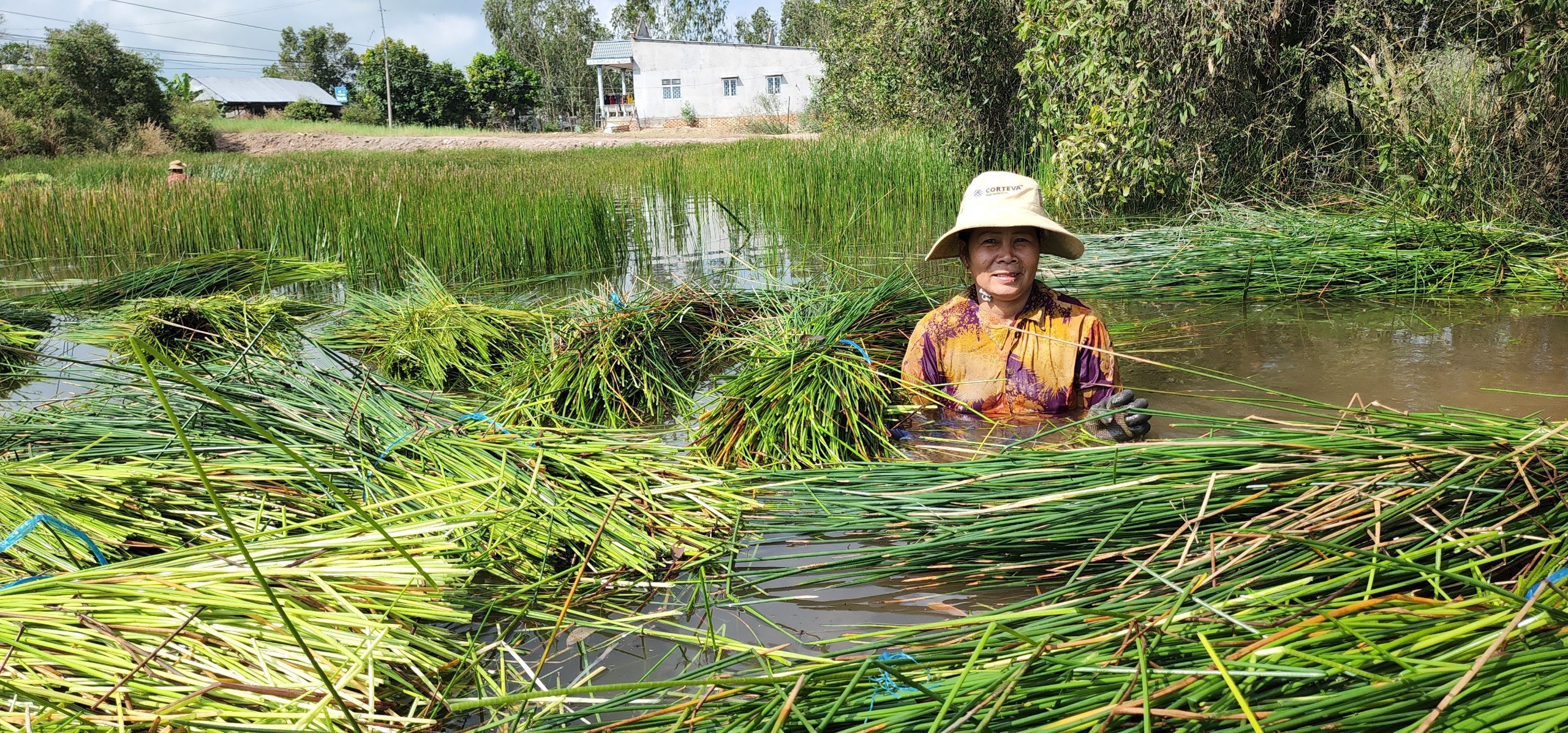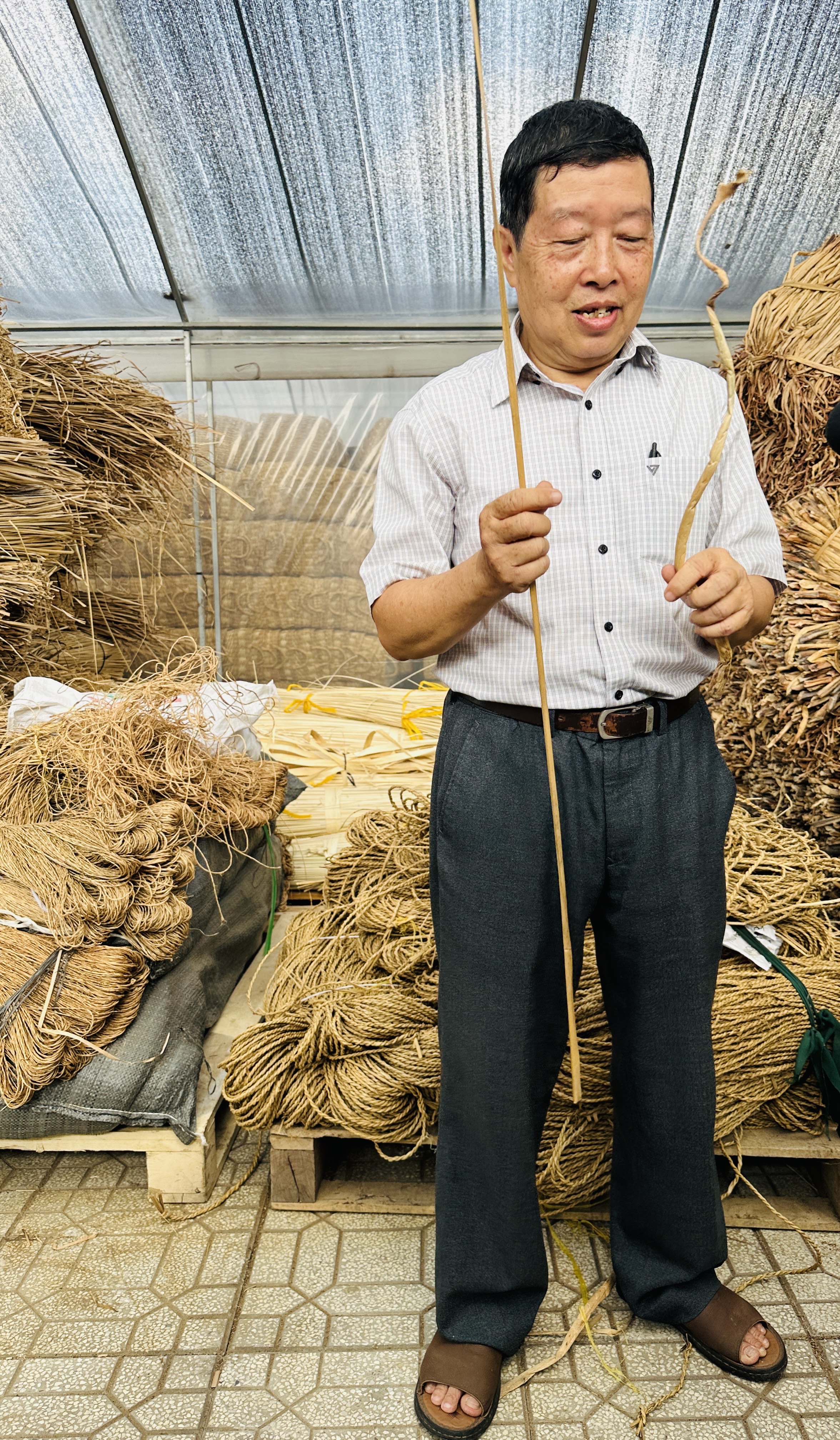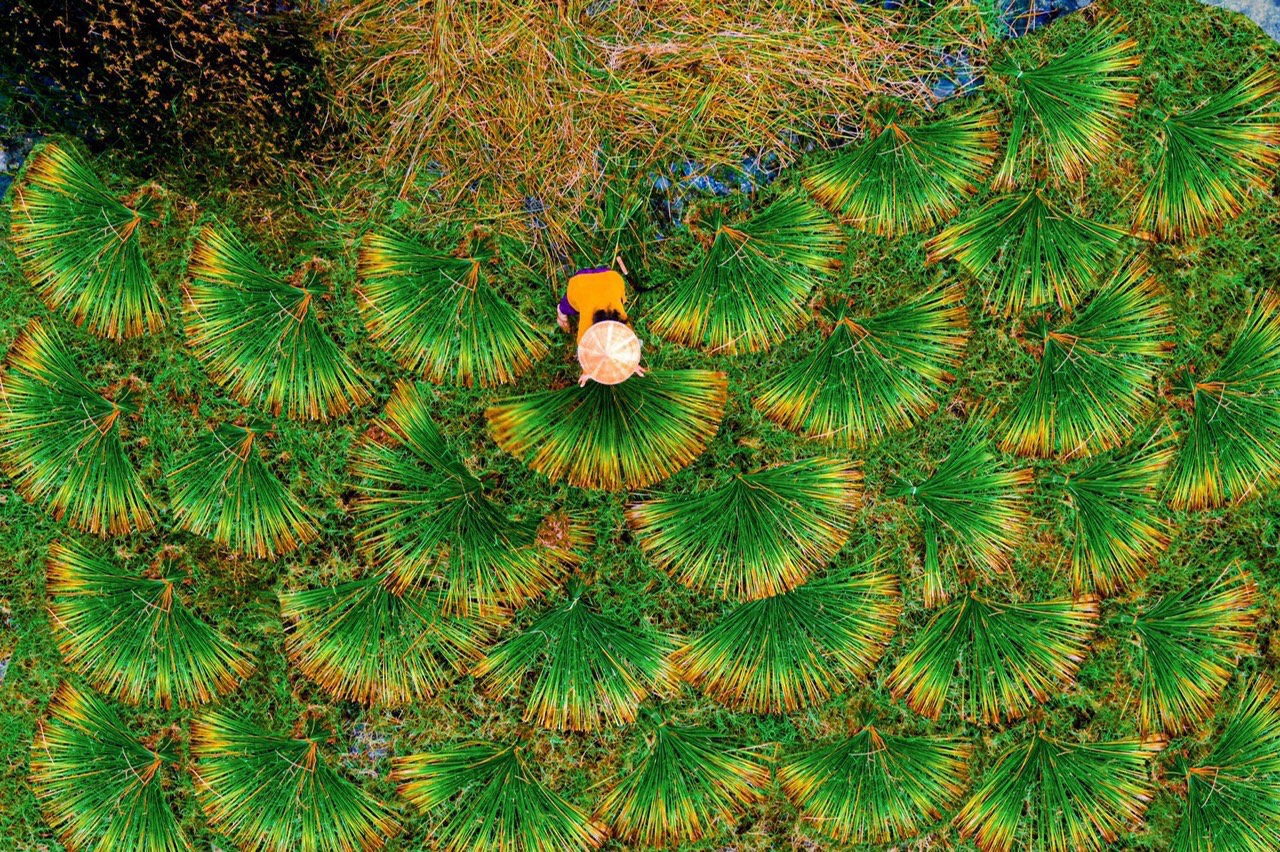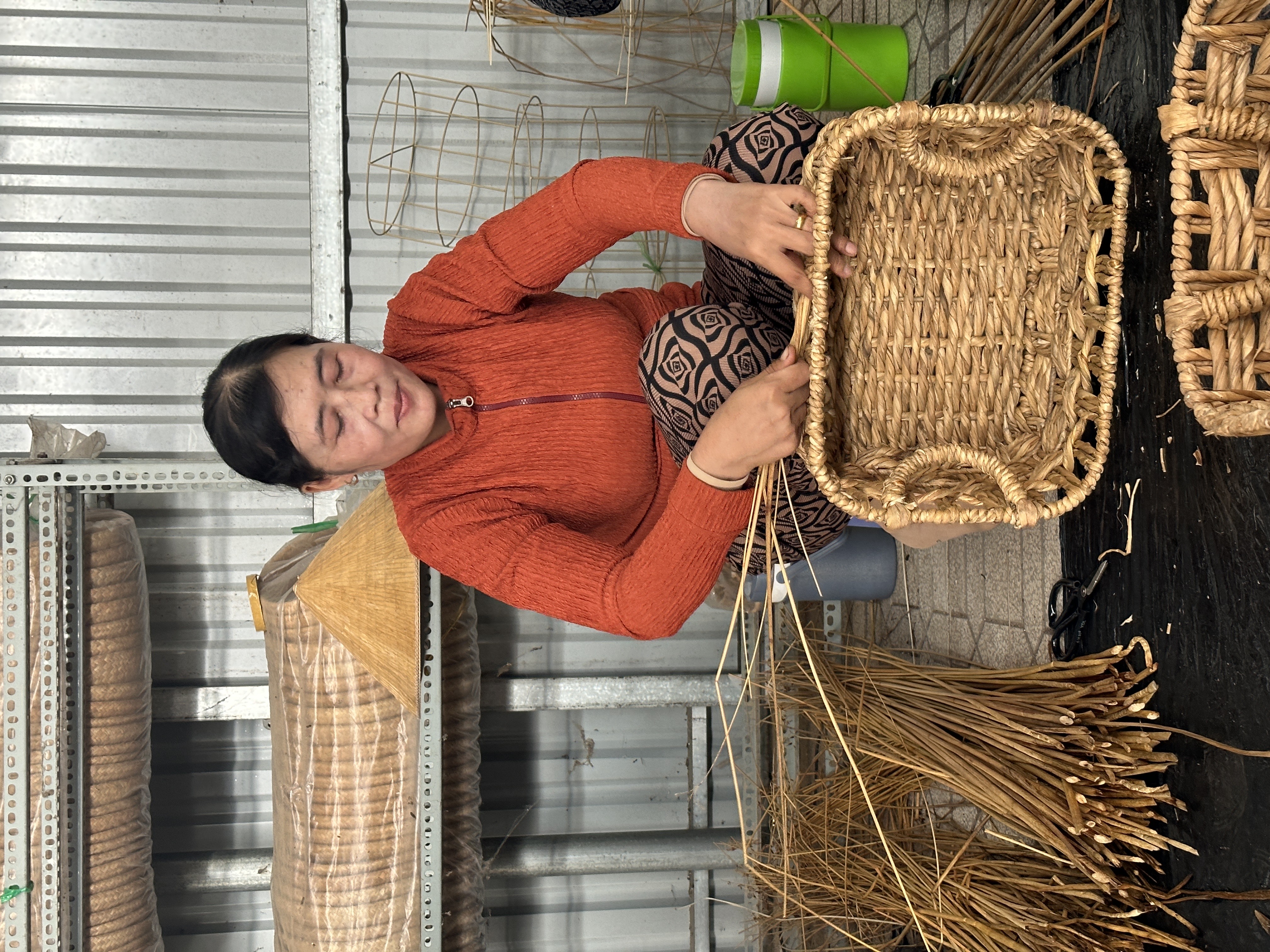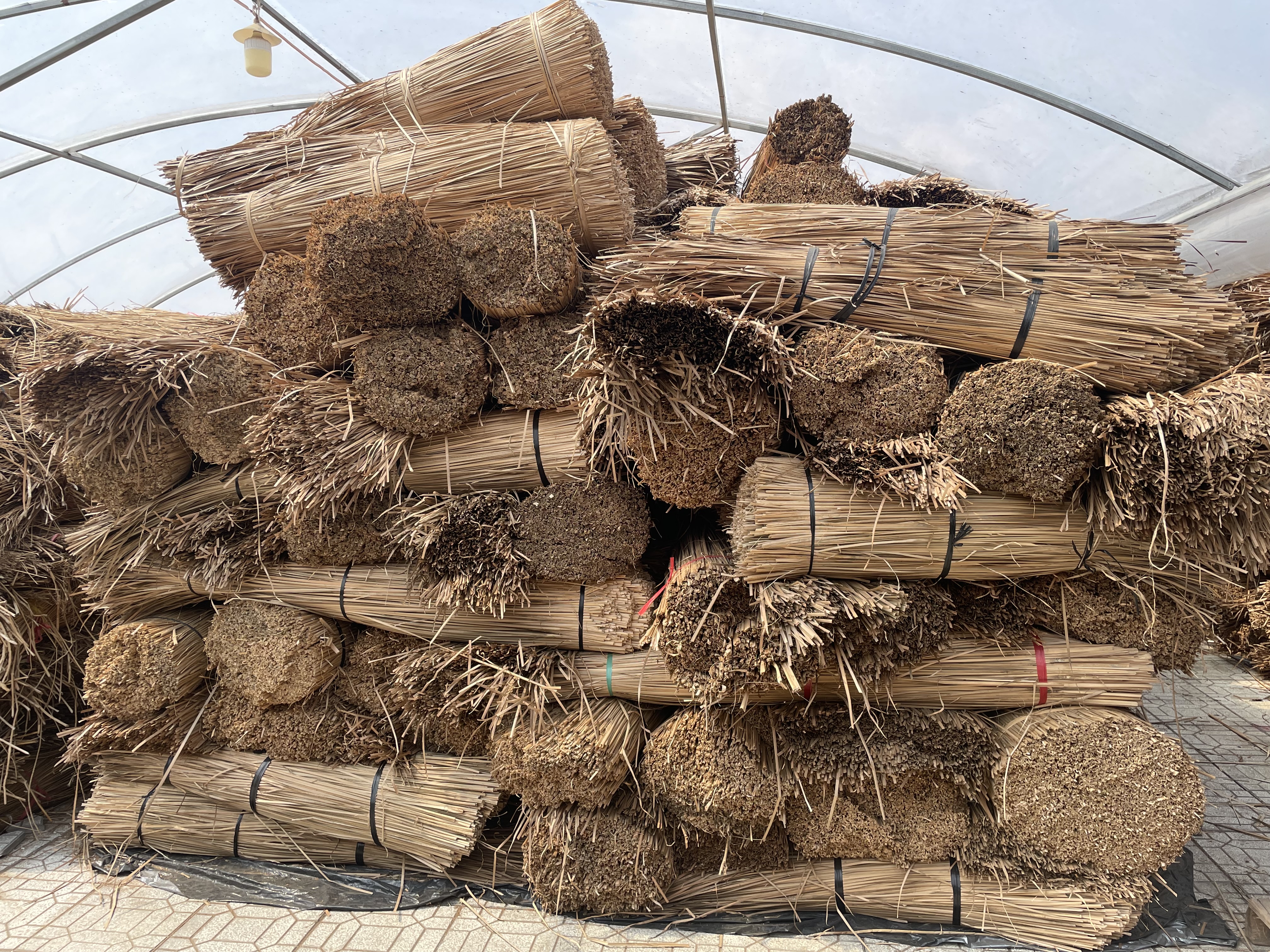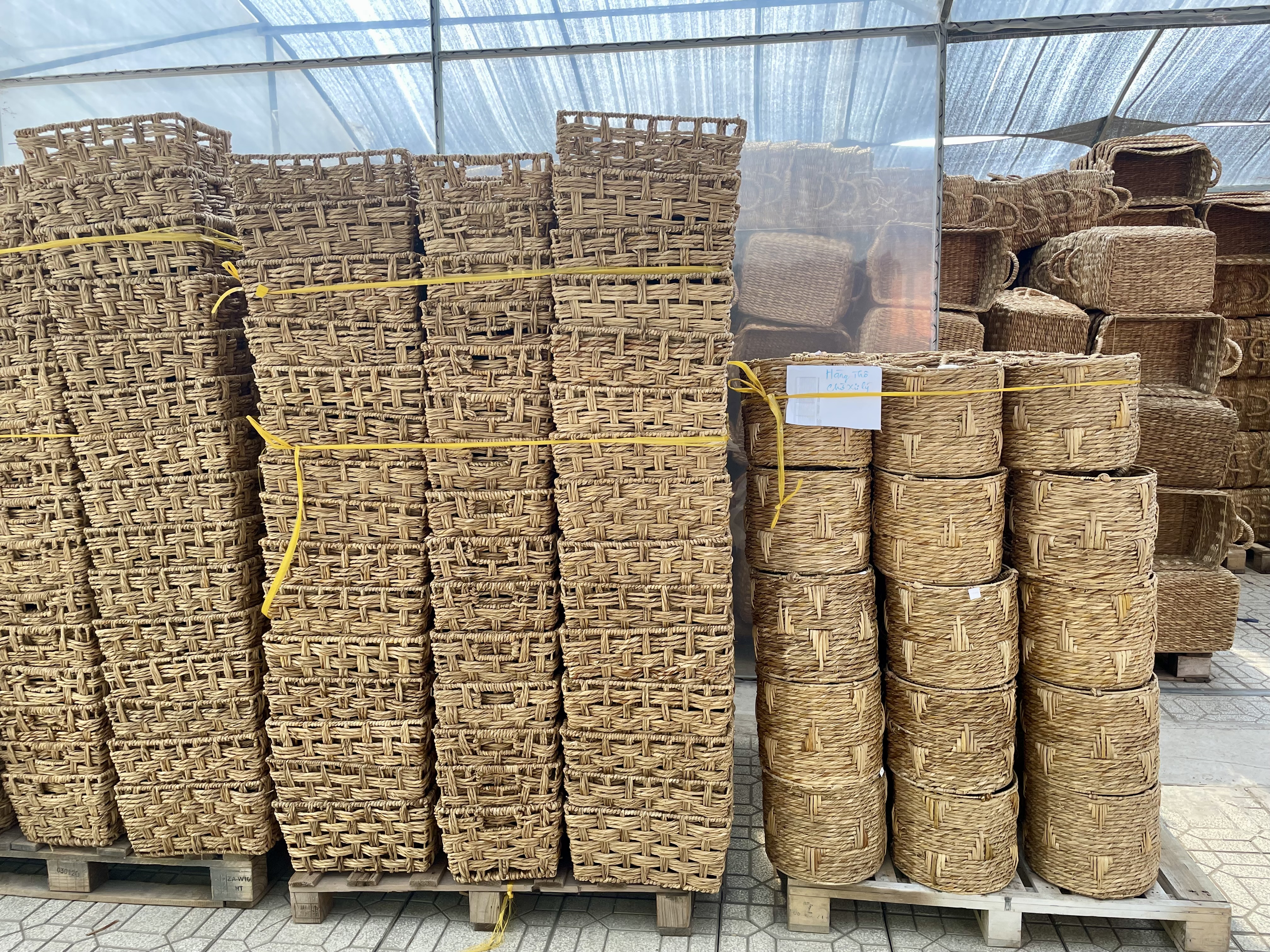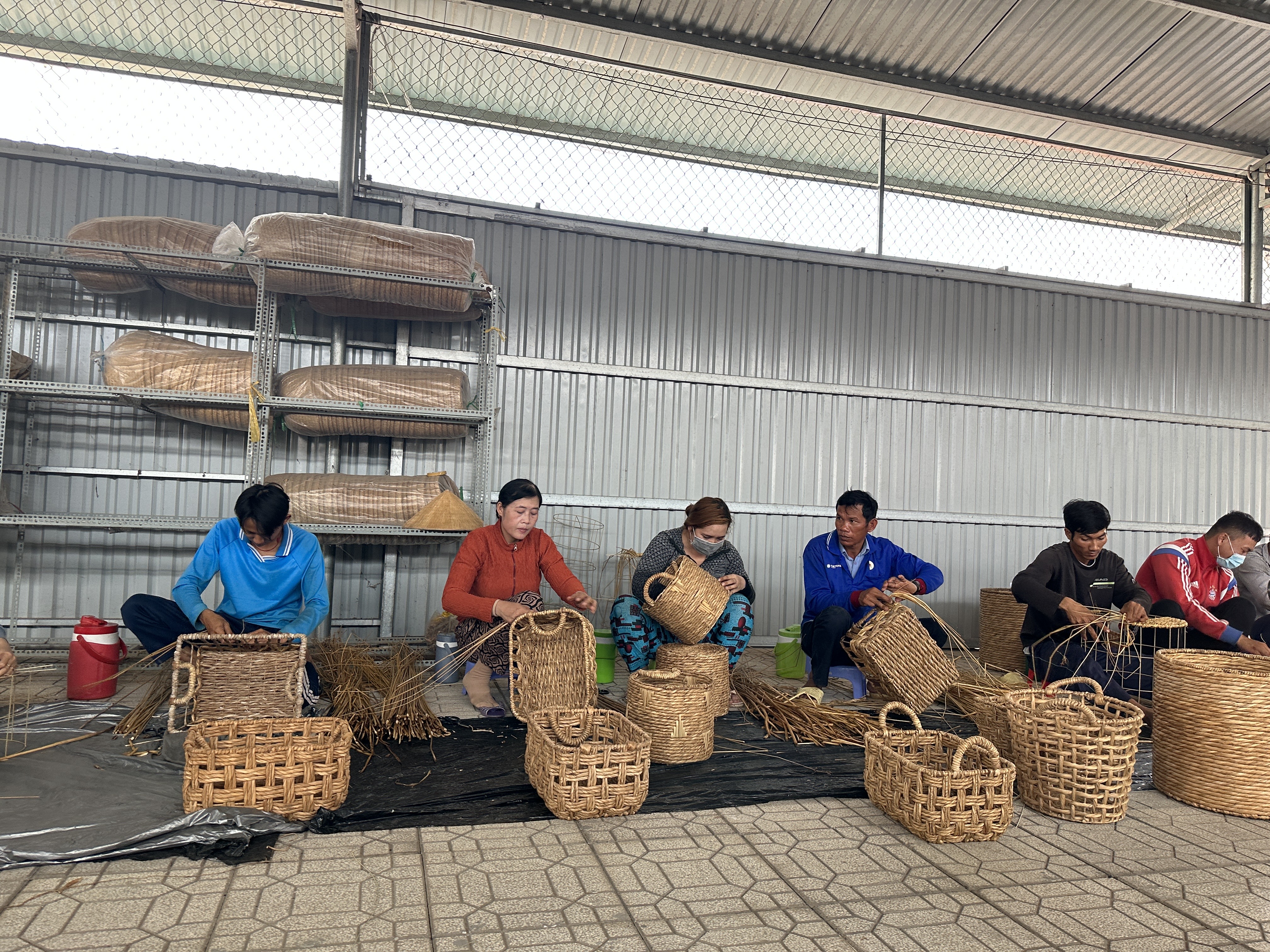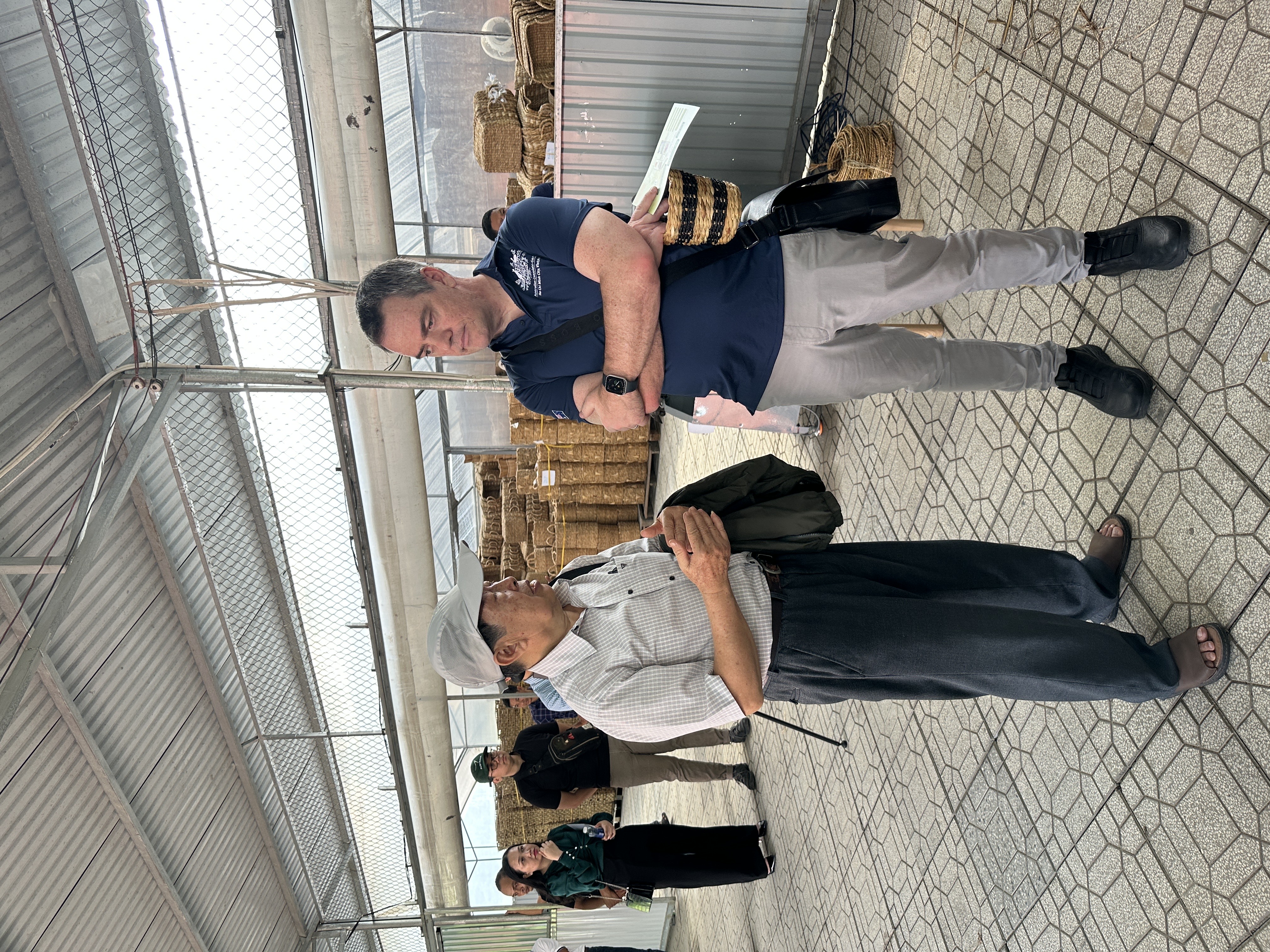Dr. Duong Van Ni, 68, president and director of the Mekong Conservancy Foundation (MCF), has spent nearly three decades studying climate change adaptation in Vietnam's Mekong Delta region and using grass species as a source of sustainable livelihood for residents in areas hit by saline intrusion.
|
|
| Dr. Duong Van Ni is pictured introducing grass species at a craft village in Nga Nam Town, Soc Trang Province, located in Vietnam's Mekong Delta region. Photo: Tieu Bac / Tuoi Tre News |
Founded in 2019, MCF focuses on research and problem solving in the fields of livelihood, education, environment, and natural resources in order to contribute to the Mekong Delta’s long-term development.
With his dedication to climate-related solutions to the delta region and sustainable poverty reduction, Ni started pursuing a nature-based model in 1996.
The nature-based model means that it must utilize the available natural resources such as plants, grass, water, and soil to enrich residents’ lives.
“When Vietnam opened its door for global economic integration in 1990, a kilogram of shrimp was as expensive as 10 kilograms of rice," Ni recounted.
“As such, locals in the delta rushed to shift from rice growing to shrimp farming.”
However, uncontrolled shrimp farming caused many areas to be intruded by saltwater and triggered a source of diseases.
In 2000, crabs and shrimp farmed by local households died en masse due to a common disease, plunging the farmers into turmoil.
“My partners and I decided to study the land to help both the environment and farmers,” he said.
During the first on-site survey, he realized the abnormality of the ecosystem as no grass was growing in the region.
“Therefore, I was determined to restore green coverage for this region,” he told reporters during a Mekong Delta media tour held by the Consulate General of Australia in Ho Chi Minh City on March 19.
He found it tough to follow his plan as neither plants nor grass could develop in the saline areas.
"In the end, I decided to transport bulrush seedlings from a border area between Ha Tien City in Kien Giang Province and Cambodia to the site, in order to initiate the process of regenerating green coverage," he said.
|
|
| A farmer is pictured harvesting bulrush in Vietnam’s Mekong Delta region. Photo: MCF |
The grass species develops well in salt water.
Besides, he also studied and regrew cattails that can be suitable for wetlands.
“Locals said that we were crazy, while local authorities warned residents about our plan,” he recollected.
They thought that it took them much time to destroy grass to have empty land for shrimp farming, but these scientists were trying to regenerate such useless plants, he elaborated.
Yet, when the model stood out, meaning that residents can use these plants to craft housewares and sell them, many households supported and joined it.
“We established a cooperative to connect with companies for consumption and export,” Dr. Ni said.
Notably, a craft village was set up in Nga Nam Town, Soc Trang Province in 2021, with some 1,000 craftspeople aged over 40.
As part of his model, he and some relevant units are implementing a project titled 'Creating sustainable livelihoods through climate-adaptive crops' funded by the Australian government.
The project, which will run through 2025, is aimed at expanding bulrush as a replacement crop for mono-shrimp aquaculture to improve soil and water quality and create sustainable livelihood by producing housewares such as baskets for export to the U.S., Europe, and Australia.
Resorting to native grass species to foster livelihood
After conducting thorough experiments and research, the doctor and his colleagues opted for bulrush and cattail as suitable crops to cultivate in various locations within the delta affected by saltwater intrusion.
This move was meant to combat saline intrusion effectively and establish sustainable livelihoods.
Ni explained that he based the decision on biodiversity analysis, the long existence of these natural grass species, and the stability of materials to develop the model.
These species originated from the delta, so restoring their presence in their own land is essential, he said.
In addition, the world is working to address biodiversity loss, while the pace of species extinction is 100 times, or even 1,000 times faster than that in the past.
As such, people are expected to gradually lose native species.
“Meanwhile, native species play a key role in the future of economic development,” Ni underscored.
He also took ST25 rice, the world’s best rice, as an example, adding that the variety stemmed from the region.
“Native species are treasures,” Ni asserted.
|
|
| A craftswoman is shown using bulrush to weave a basket. The bulrush was regenerated by Dr. Duong Van Ni to create sustainable livelihood in Vietnam’s Mekong Delta. Photo: Minh Khoi / Tuoi Tre |
The craft village in Nga Nam Town is using bulrush, cattail, and water hyacinth to make housewares to diversify handicraft products to serve the local and global markets.
After being dried, bulrush plants are durable and soft, so they are also suitable for the low humidity and dry weather in the United States and Australia.
Though water hyacinth is crunchy, the plant is short, making it easy for craftswomen to weave products such as chairs, baskets, and bags.
These native grass species have helped boost the self-contained life of locals as they can proactively plant them, harvest and dry them, make housewares out of them, and sell these products, he said.
|
|
| Dried grass used for crafting in Nga Nam Town, Soc Trang Province, located in Vietnam's Mekong Delta. Photo: Minh Khoi / Tuoi Tre |
|
|
| Handicraft products made of bulrush. Photo: Minh Khoi / Tuoi Tre |
|
|
| Craftspeople weave baskets in Nga Nam Town, Soc Trang Province, located in Vietnam's Mekong Delta. Photo: Tieu Bac / Tuoi Tre News |
Ambitious plan to build a better delta
“I am striving for a goal in which these materials will replace artificial sponge used for filling furniture and cushions among others to protect the environment,” Ni unveiled.
He also said that he was working with multiple research institutes to study the basic characteristics of natural materials to accomplish the goal.
Furthermore, he is planning to build a natural history museum for the Mekong Delta region to provide new generations and tourists with knowledge and information about the delta and its historical stories.
The Consulate General of Australia in Ho Chi Minh City organized the Mekong Delta media tour from March 18 to 22 to introduce Australia’s commitment and activities in the delta.
Since 2000, Australia has delivered more than AUD650 million (US$427 million) in official development assistance to the Mekong Delta region.
The Mekong Delta is facing multiple challenges, receiving backing from several nations, including Australia, Nguyen Phuong Lam, director of the Vietnam Chamber of Commerce and Industry - Can Tho Branch, said at the media tour briefing held at Can Tho University on March 18.
Among them are saline intrusion, a shortage of clean water, the high rate of unskilled workers, much reliance on agriculture, the modest number of businesses, low economic growth, weak foreign direct investment attraction, and a high unemployment rate, he pinpointed.
|
|
| Dr. Duong Van Ni (L) talks to Ciaran Chestnutt (R), Deputy Consul General of Australia in Ho Chi Minh City, about his nature-based sustainable livelihood project. Photo: Tieu Bac / Tuoi Tre News |
Like us on Facebook or follow us on Twitter to get the latest news about Vietnam!



